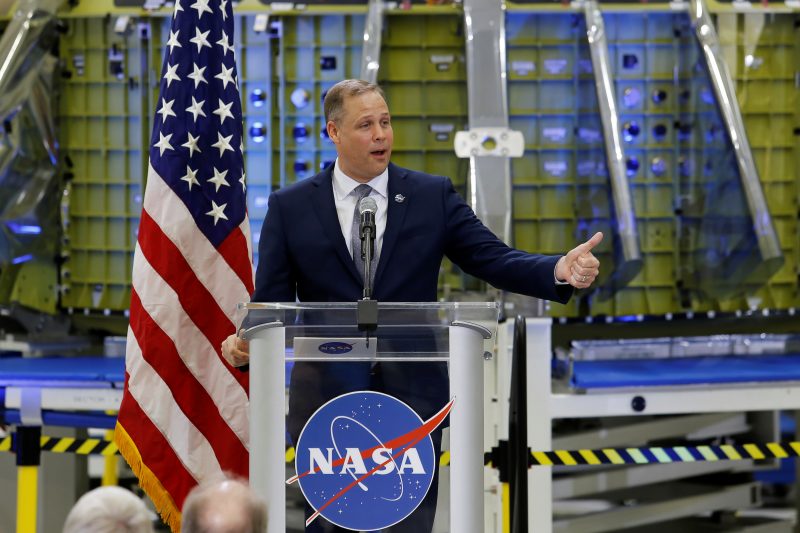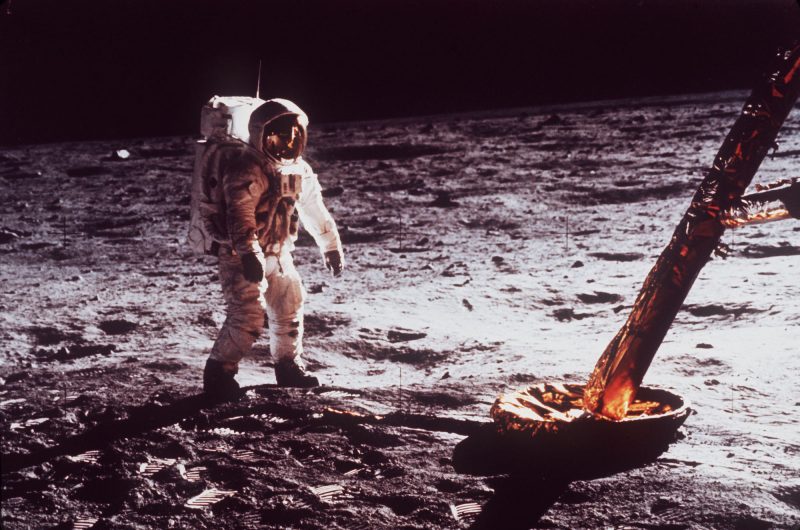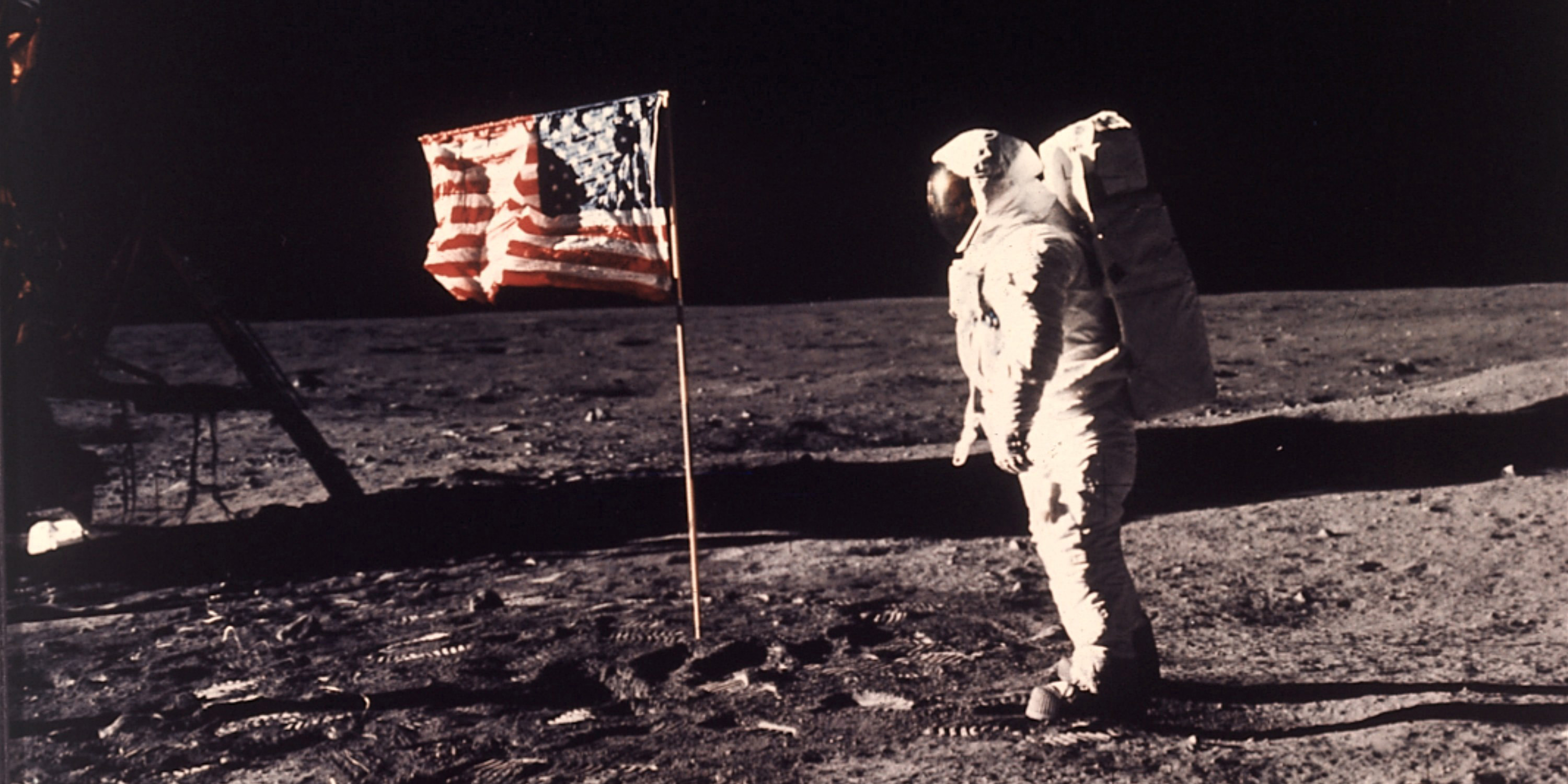- NASA thinks it will cost between $20 billion and $30 billion to put humans back on the moon by 2024.
- NASA Administrator Jim Bridenstine said that money would come on top of NASA’s existing budget and would be spread out over five years as part of the ambitious plan to build a base for humans on the moon.
- The plans for the moon are part of the goal of reaching Mars, allowing NASA to learn about spending long periods of time off of earth and to build a base that can be used for Mars missions.
- He said that NASA’s goal is that “when this is complete the American people will have a programme they can be very proud of for the long term.”
- Visit Business Insider’s homepage for more stories.
NASA estimates that it will need between $20 billion and $30 billion over the next five years to put US astronauts back on the moon again by 2024.
NASA Administrator Jim Bridenstine told CNN on Thursday that this money would come on top of NASA’s existing budget and costs that it has incurred for its ambitious plan, and was needed for NASA to build a “sustainable presence on the moon.”
“When we talk about the $20 to $30 billion, it would be $20 to $30 billion on top of the normal NASA budget,” he said. “But of course that would be spread over five years.”
NASA is currently slated to receive more than $20 billion a year until 2024.
Read more: NASA will send a female astronaut on the 2024 moon mission
NASA is framing its quest to put humans on the moon for only the second time in history in light of its goal of sending humans to Mars, which it wants to do in the 2030s.
Bridenstine told CNN that going to the moon would be vital in learning how to build a presence on another surface before attempting to reach Mars, where astronauts would have to stay much longer.
"The reason the moon matters, when you talk about going to Mars, Earth and Mars are on the same side of the sun once every 26 months. That means when we go to Mars we have to be willing to stay for a period of two years," he said.
"We don't want to have to learn how to live and work on another world for the first time at Mars, because the cost is too high."
"So think of it as a short-term investment to have a sustainable programme on the moon where we're ultimately keeping our eyes on Mars. How do we learn to live and work on another world, namely the moon, and then go on to Mars and do it in a way [that] when this is complete the American people will have a programme they can be very proud of for the long term."

NASA wants to send two people to the moon, a man and a woman, who would be the first woman to walk on the moon, with the ultimate goal of creating a base that more humans could travel to and use as a staging post for Mars missions.
The organization wants to create a "sustainable presence" on the moon by 2028, framing the mission as different to the 1969 mission as one where humans are going to the moon "to stay."
Bridenstine told CNN that NASA is "negotiating within the administration about its budget and is aware that it will have to convince lawmakers to support it.
The moon project is named after Artemis, the twin sister of Greek god Apollo, whose name was used in NASA's previous moon missions. NASA says that through the project "future astronauts will stay longer on the surface of the Moon" and "explore more of the Moon than ever imagined."
The Trump administration had originally wanted humans to reach the moon by 2028, but then said that it wanted to accelerate the programme by four years. As part of that acceleration, Trump proposed boosting NASA's budget by $1.6 billion for 2020.

But Trump later seemed to contradict his administration's support, criticizing its ambitions for the moon and saying that the organization should be focused on reaching Mars: "For all of the money we are spending, NASA should NOT be talking about going to the Moon - We did that 50 years ago."
He said that NASA "be focused on the much bigger things we are doing, including Mars."
But Bridenstine tweeted in response to clarify that its moon mission is a step in its Mars goal.
"As @POTUS said, @NASA is using the Moon to send humans to Mars!," he tweeted.
The further clarification about the cost of NASA's moon ambitions come as India declared its intention to become the fourth-ever country to land a spacecraft on the moon and that it wants to set up its own space station by 2030.

